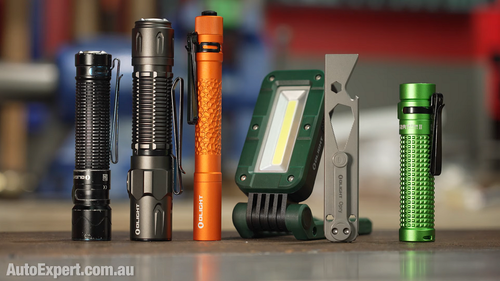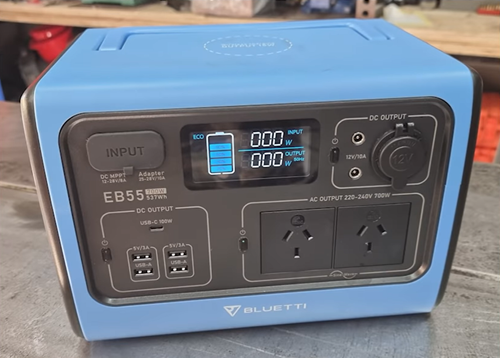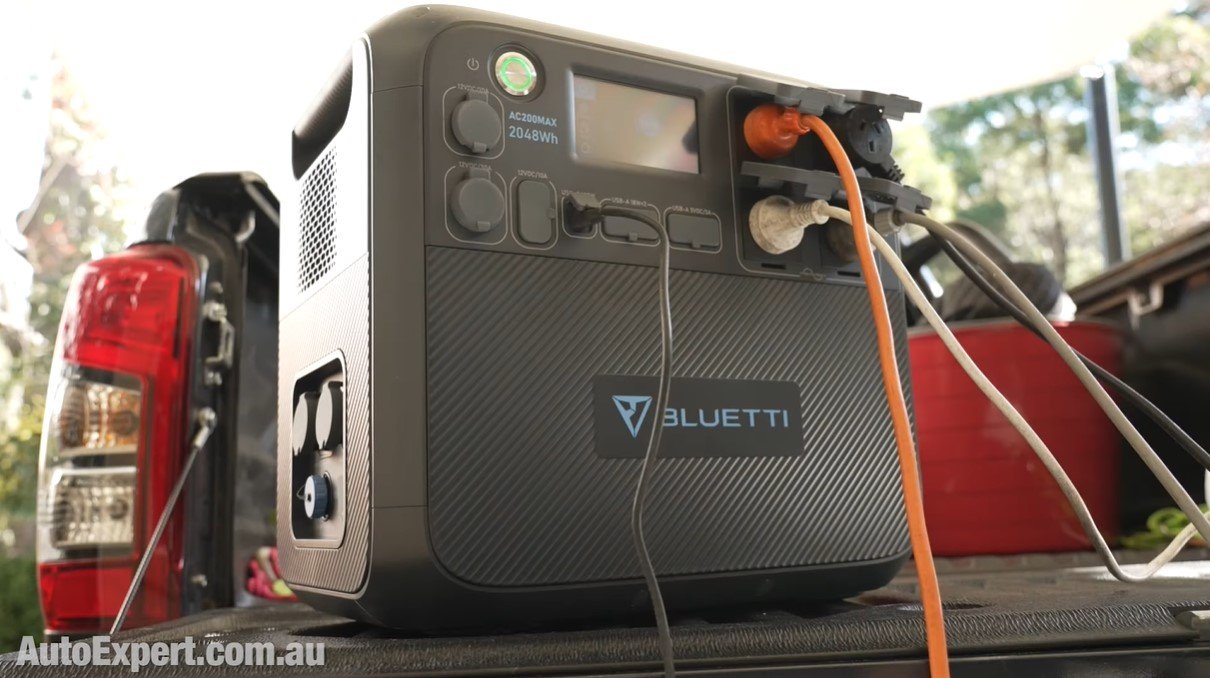Heroic workshop upgrade: Is this the perfect home DIY car hoist?
Let’s fantasise together about a space-efficient, single post vehicle hoist - except it’s real. With this non-sponsored report, you can dream, and maybe even start thinking of how to justify the expenditure for your home DIY workshop or garage…
Recently, I got to play with a mad new FatCave toy and of course - I want one. It's a living hell.
DISCLOSURE: I want to tell you about this single-post vehicle hoist, but if I do, you're going to want one too. I warn you, there is some risk involved. You could, hypothetically, procure one of these ‘items’, build it and park it up the back of your FatCave (where your wife rarely visits), and you can do all of that without getting divorced. But it's going to be close…
This is a little bit of a paradox. A Pandora’s Box, even. Once you know about this compact, portable single-post hydraulic vehicle hoist - you cannot put Schodinger’s cat back in the box. Are you ready?
The invitation came from a dude named Rohan Steele who runs a niche business called Hero Hoists and no, this is not a sponsored report. No money is changing hands, I just got super impressed by this one product, which I want to show you.
Hoists are a fantasy thing. Everyone with a garage wants one and if you've only got a 2.1 meter ceiling in your garage, then you probably can't have one. But there are people who could have a hoist.
This niche business does two-post and four-post hoists, truck hoists, caravan hoists, scissor lifts, ATV hoists and motorcycle hoists - whatever you need, they have it, most probably, if you're sick of sticking a jack under the arse of your vehicle, getting down on your knees and scrambling to get axle stands underneath without crushing yourself to death.
Just while we’re on the subject, check out my reports:
GET JACKED Part 1: Everything you need to lift your jacking game >> and
GET JACKED Part 2: How safe are jack stands really? Their weakest link revealed >>.
When you see a vehicle on this single-post lift rise from the floor, you’re initially gobsmacked that it works. Why? Because it’s a single post - your mind tells you it should lurch and teeter before quickly dropping your ute and probably with enough kinetic energy to roll it on its roof.
But this doesn’t happen. Why? Because it's cantilever, just like a pallet truck. You can just wheel it around, carefully and slowly, obviously.
I looked at the safe working load capacity on this device and it says 2.5 tonnes. So I wondered what would happen if a dude who looks and sounds just like me got his Triton - that he paid for with his own money - and stuck at 1.8 meters up in the air.
After honouring the workshop gods with our single star-spangled salute, we set about positioning the arms.
Once in place, plugged in and filled with hydraulic oil, it’s as easy as the push of a button.
You can check out the Hero Hoists portable single-post lift here >> and download the Hero Hoists single-post lift specs (PDF) here >>
So far so good.
Then I wondered, what if I rocked it backwards and forwards, and tried to throw it off. What would be the worst that could happen? The vehicle’s value would be zero and one of us would probably be crushed, but aside from that, if it's worth doing, it's worth doing properly…
This Hero Hoist Lift King has a 2.5 tonne lift capacity; it's essentially a pallet truck that you jack up and it's got a hoist attached. It weighs 700 kilograms, amazingly enough, but it wheels around just fine on a flat concrete surface.
I'm not sure whether it's a good idea to use a device like this if you've got a real modern project home with that waffle pad type construction with polystyrene blocks that are essentially just lightly coated in concrete. This could be a very bad idea.
But if you've got a proper concrete slab, this thing is fine. It's got to be reasonably level, obviously, because we're lifting heavy stuff up into the air. But you wheel it around fairly effortlessly.
In fact, it's so effortless that at times you're not aware of its mass, and it would be easy to wheel it into the side of your vehicle if you’re not careful, even though you're trying to stop it by pulling it back.
Wanna become a Jedi Knight in your own workshop? Check out:
Home shed metalwork basics - deep dive using Bluetti AC500 home battery backup system >>
You versus rust: How to win. >>
Making friends with heavy metalwork. (Ghetto engineering PhD fundamentals.) >>
Welding, cutting, drilling & grinding with Bluetti AC200MAX power station >>
Woodworking with a Bluetti AC200MAX off-grid power station >>
My AutoExpert AFFORDABLE ROADSIDE ASSISTANCE PACKAGE
If you’re sick of paying through the neck for roadside assistance I’ve teamed up with 24/7 to offer AutoExpert readers nationwide roadside assistance from just $69 annually, plus there’s NO JOINING FEE
Full details here >>
AutoExpert DISCOUNT OLIGHT TORCHES
These flashlights are awesome. I carry the Olight Warrior Mini 2 every day - it’s tiny, robust, and super useful in the field or in the workshop. Olight is a terrific supporter of AutoExpert.
Use the code AEJC to get a 12% discount >>
Generators suck! Go off-grid with AutoExpert BLUETTI PORTABLE POWER STATIONS
Need mobile, reliable power? If you’re camping, boating, caravanning or building a dirty big shed in the back paddock, and you need to run a refrigerator, lights, air conditioner, cooking, and/or a bunch of tools - Bluetti has a clean, tidy, robust solution…
Get your AutoExpert free shipping discount here: https://bit.ly/3n62heK
USING THE HERO HOIST LIFT KING
One particular joy of this portable single-post system is you don't need to drill any holes in the concrete floor of your garage.
Therefore, you don't need to suffer the indignity of your garage being permanently occupied by enormous posts that are dynabolted into the foundation. There are no massive four or two post structures dominating the roof space making it hard to move long objects or taking up hanging space for storage.
Hypothetically, you could also use it outside too. There are plenty of examples online of these things being used outside on level concrete slabs - remembering it is not compatible with a slope.
So let's look at it in terms of the dimensions. It's 2.6 meters high, so you need ceiling clearance if you want to use it inside. You need 2.6 metres minimum just to get the thing into your shed. That's going to be a problem for some people, but hey if you want a hoist and you've only got 2.1 metres, how high could you actually raise the vehicle in any case, before its roof hits the ceiling of your garage?
Collapsed, it's 100mm off the ground, which is the minimum ADR ground clearance. It comes with ramps that you can detach on the near-side to the column, which allows you to drive over the lift arms, and the ramps themselves are quite heavy and durable.
If you're working on a race car, you're gonna have to rig something up to clear the arms’ 100m height, because that's how high the thing sits. You might consider using quality race car trolley jacks and axle stands to get the vehicle up and then position the hoist underneath to continue lifting to the desired height. You might want to speak to Hero Hoists about how you might go about that in a safe manner in order to use their product.
You could just have the hoist positioned to the side of your garage and just drive the vehicle over it, be it a conventional car, a four-wheel drive, SUVs or a utes. They're going to be fine.
This hoist goes up to 1760mm, so that's nearly 1.8 metres, let's call it.
It comes with three sets of risers - 50mm high, 100mm or 150mm - they come with rubber pads on the top, and can be really useful. If you want a bit of extra clearance between the hoist’s transverse arm and components underneath the vehicle, like you’re working on tail shafts or if you want to replace an exhaust system, the risers just give you that bit of extra clearance to get parts out, or to get tools in place.
But it can be a bit of a head-scratcher the first time you do this, because you need to be aware of the underside topography of your car. You need to know where the lifting points are and then position of the arms that both pivot and extend to get to those lift pads, then you wind up the threads on the rubber pads.
And if you need more clearance than that, you’ve got the risers which are surprisingly stable.
The Hero Hoists Lift King single-post hoist is also TUV and Australian certified. Meaning:
I had the Triton up there which, by the way I had it loaded that day, must have been 2.1 tonnes, so pretty close to the max capacity. And I had it right up there, on the maximum height. Frankly, you wouldn't be able to do that in most garages, even garages with above average ceiling clearances, because of the proximity of the car’s roof to the garage ceiling. This is going to limit many users in terms of the height.
By the way, you don't want the car’s roof and the garage ceiling to come together, ever.
There are standards for working under heavy things that are really just sociopathically wanting to kill you, just like every other machine in your shed just wants to kill you. Put a big mass up on something, it wants to crush you to death. So, you have to have countermeasures.
TUV certification and Australian certification are the countermeasures against that. When you lift it up, it takes 53 seconds to get from the bottom to the top of its travel. As it does, you can hear clicking every time because there are cut-outs in the column and safety palls that lock into those cut-outs. So, if there's a complete failure of the hydraulic system or electrical system, the whole thing can't collapse because it's mechanically locked in place.
You don't need an electrician because it's powered by 240 volts at 10 amps from a standard general power outlet.
It doesn't come with oil, so you do need to buy hydraulic oil in a small drum and tip it into the reservoir - done. Plug it into any GPO and it just works.
The portability is such a specifically cool aspect because even if you are a mechanic and you've got one or two primary hoists and a couple of other work bays, sometimes you might need another hoist but may not have the floorspace or the money to do it.
This way, you just wheel one out from the corner or the store room for those jobs where you don't need the full-on dual-post hoist - like working at waist height to rotate the tyres - then it can go away when you need that flat, open workspace back.
The whole hoist is really well made. It's built in China and I know people have this negative perspective about Chinese manufacturing, but every second thing that's on sale in Australia, is made in China.
My impression of it is the Chinese have the capacity to do any kind of manufacturing. From super high-quality ultra-clean-room precision stuff, to super low quality at mass scale. In the contex of hoists, this thing is well put together, it's very well finished-off.
It's got socket head cap screws holding it together, I think it's laser cut and the laser finish is straight off the gun on all of the cut surfaces. It’s really nice, especially if you know anything about fabrication and engineering, you look at it and think, ‘Yeah, a lot of thought went into that.’
It takes up a surprisingly small footprint on the ground, too. The dimensions on the floor are: nearly 2.6 meters from the outside of the column to the far end, in the transverse direction, width-wise across the car. It takes up nearly 1400mm front-to-back, longitudinally in other words.
It's actually specifically 2580mm wide in the transverse direction and 1385mm long with the arms folded and the extendable ramps (with the rubber pads on them) all pushed right in. That's the space you need just to store it, but hypothetically it'll just wheel into the corner and wait until the next time you want a car off the ground.
Ultimately, this is a really neat way of getting the versatility of hoist without all the inconvenience of having it take up all that space in what might be a fairly small garage or workshop arrangement.
For you, a hoist is dead easy to fantasize about, especially a super space-efficient single-post product like this one, but then there is the reality of how often you're going to use it and can you justify the expenditure.
This is a bridge that only you can cross, upliftingly enough. It might cost you a few designer handbags.





























The 2026 Ranger Super Duty promises bigger towing, more payload, better off-road credentials and an even bigger price. But can Ford improve the ownership experience and general reliability?